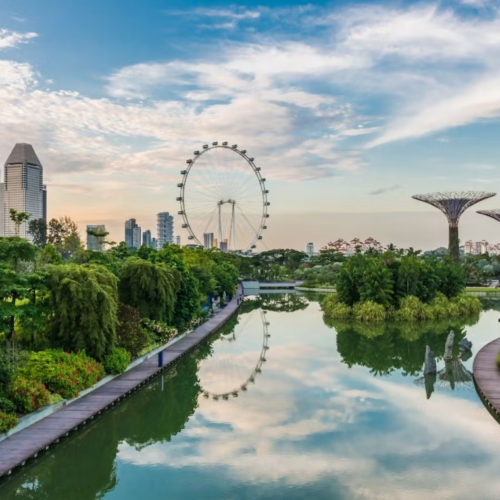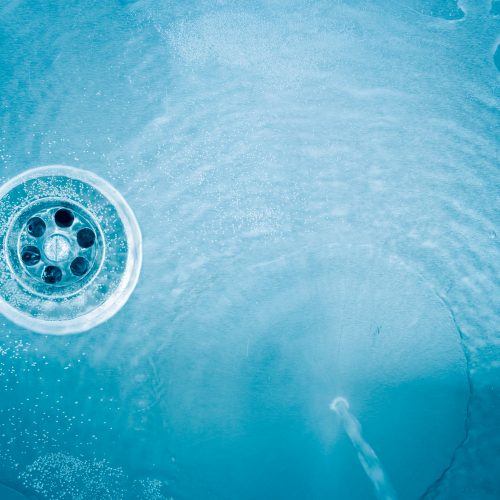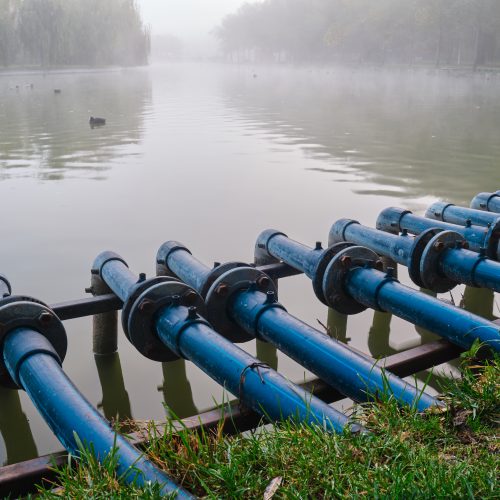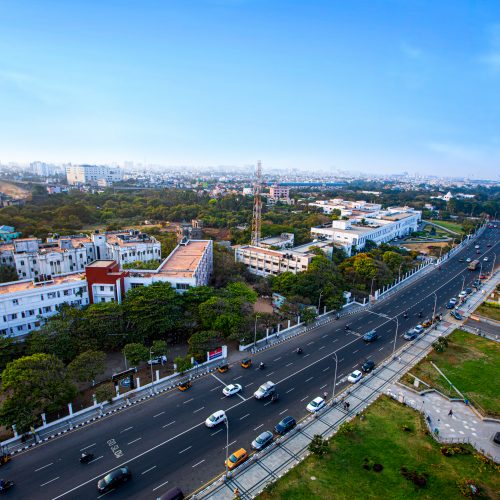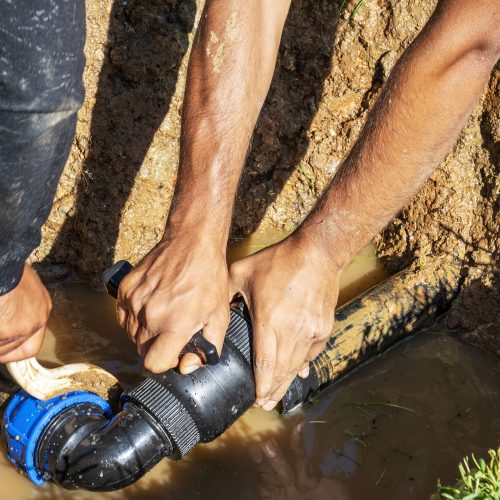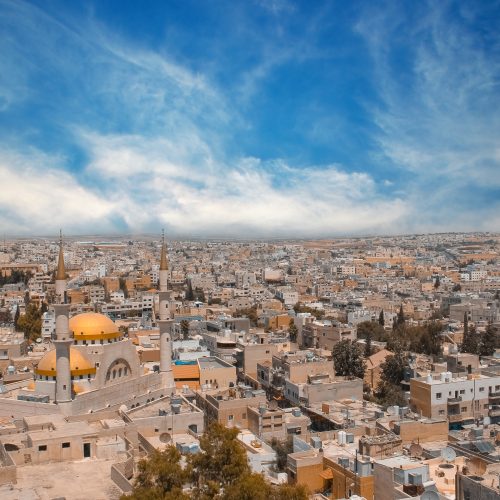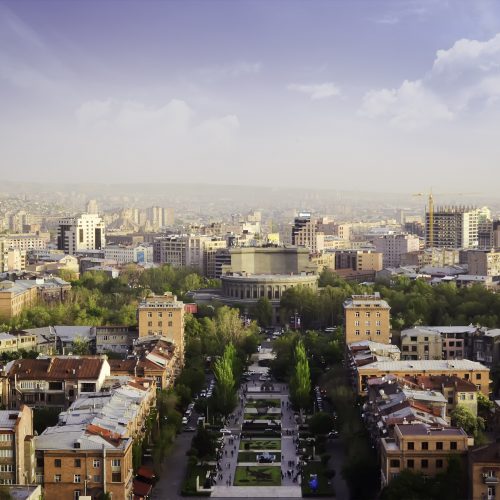Context and policy overview
Zaragoza is located in the north of Spain. It is a semidry area with moderate average rainfall (314 mm a year). In the 1990s, a severe drought made the city’s water shortages a distinct problem, sparking public concern and political controversy.[1]
In 1996, the NGO Fundación Ecología y Desarollo and the municipality jointly set up the Zaragoza Water Saving City programme to tackle water scarcity.The aim was to change wasteful behaviour and increase efficient use of water. The programme set an ambitious target of reducing domestic water consumption. This included saving one million m3 of water, a target that the programme successfully achieved within a year.[2]
Water shortages in an urban context can be challenging to overcome. However, this project addressed shortages through financial incentives, educational campaigns and multiple partnerships, which secured funding from a variety of sources.
Implementation
The water-saving project comprised a wide range of measures.
Media campaign: In order to increase public awareness of the project, Zaragoza ran a broad media campaign. It featured advertisements on TV, radio and public transport, in addition to information on leaflets and posters. The campaign achieved a high level of public awareness about the project.
Educational outreach: The programme used education to make people conscious of their own domestic water use and to prompt more efficient use of water and related technologies. This outreach was later extended to schools to ensure that children understood the principles of efficient water use and why it is important to reduce water wastage. By April 1998, 168 educational establishments, 428 teachers and 70,000 students had participated directly in the campaign’s educational programme.[3] The cost of the media campaign and educational outreach was around €2.5 million between 2002 and 2010. The second part of the water saving project included a “50 Good Practices” guide. The guide identified measures for efficient water use by businesses, covering waterrelated technology and behaviours in the city’s green spaces, buildings and industry.[4]
Economic incentives: The regional government gave discounts of 20 to 25 per cent to citizens purchasing water-efficient products. In 2002, the Zaragoza city council also offered economic incentives for households to reduce their water consumption. Residents who reduced their water use by 40 per cent or more in the first year of the scheme were entitled to a 10 per cent discount on their water bill. A 10 per cent reduction in water consumption was also expected in the following years. Water bills were redesigned to show clearly how each household’s consumption compared to the levels in previous months.
Partnerships: In order to ensure a range of options for customers, the water-saving project partnered with businesses and companies that sold water-related technologies and products. This allowed consumers to choose water-efficient products for their homes, including for bathrooms and kitchens.
Tariff reform: Water tariffs have the ability to make water consumption fairer and more responsive to demand. Revenues can be used to cover indirect costs in the water cycle and the direct costs of providing services.[5] In this case, the following measures were under taken:
- the establishment of fair costs for consumers that correspond to the resulting benefits and services
- a reasonably priced and accessible provision of water services to maintain affordability for vulnerable households
- incentives for smart and efficient water use, including financial incentives, such as discounts on water bills tied to a reduction in household water consumption, and higher rates for excessive water consumption.
Infrastructure upgrade: The programme also required significant upgrades to the water infrastructure in order to minimise leakages. Approximately 16 per cent of the 1,200 km pipeline network required upgrading. The city also initiated pressure management controls and maintenance of leaking storage tanks in order to limit water loss.
Barriers and critical success factors
The most significant factor contributing to the project’s success was the change in consumer behaviour following effective public awareness campaigns and engagement. Instead of promoting generic water-saving messages, specific user groups were targeted with awareness-raising activities directly relevant to their business or lifestyle.
The establishment of a central coordination unit also contributed to the success of the campaign. The Zaragoza Water Commission ensured that there was a coherent approach to smart and efficient implementation and monitoring.
A network of 50 volunteer “accomplices” was set up and free audits were offered to these nonresidential water users to help implement watersaving measures. This group included, for instance, a hospital, a fish supplier and a swimming pool operator. Subsequently, as soon as positive results came in, case studies of their success stories were circulated to other businesses.[6]
Policy commitments and the supportive city council made the city’s achievement possible through an increase in the available funding opportunities. This also contributed to civic pride. The authorities led by example, providing a reliable, efficient water and wastewater service.
Results and lessons learned
Overall, the Zaragoza project significantly reduced water use and enabled smart behaviour in relation to water consumption. It achieved the following outcomes:
- The city decreased water use by almost 30 per cent within a 15-year period, despite a 12 per cent increase in population over the same time frame. Daily water consumption per capita fell from around 150 litres in 1997 to 99 litres in 2012.
- The campaign enlisted 140 businesses selling technologies that minimised water consumption in homes. This enabled consumers to purchase products that were more water efficient. For instance, one bathroom retailer reported a 58 per cent rise in sales of automatic taps.[7]
- After the first phase of the project had been completed, 72 per cent of residents were aware of water-saving measures compared to 40 per cent before the project started.
- Water system performance improved, with pipe burst events reduced by more than 50 per cent and losses by more than 40 per cent.
The experience in Zaragoza shows that encouraging public participation and targeting specific sectors are valuable measures when implementing awareness campaigns. Strong political commitment is also important. The municipal strategic plan identified stakeholder engagement and public participation as important to managing the city’s water consumption.









